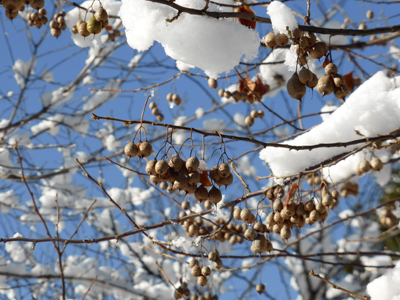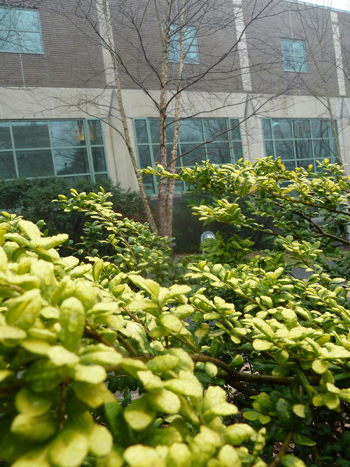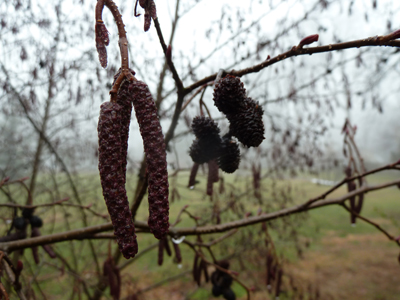Plants of the Week: January 20
 Sinojackia xylocarpa is assigned a vulnerable status by the International Union for Conservation of Nature and Natural Resources due to overharvesting for firewood and use as a construction material throughout its native range in China. This small tree is a personal favorite. Pendulous white flowers cover the tree in spring followed by curious acorn-like drupes. Rarely seen in gardens despite its highly ornamental attributes and ease of cultivation. Photo credit: J. Coceano
Sinojackia xylocarpa is assigned a vulnerable status by the International Union for Conservation of Nature and Natural Resources due to overharvesting for firewood and use as a construction material throughout its native range in China. This small tree is a personal favorite. Pendulous white flowers cover the tree in spring followed by curious acorn-like drupes. Rarely seen in gardens despite its highly ornamental attributes and ease of cultivation. Photo credit: J. Coceano
Garden location: West Garden, near intersection of Elm and Walnut
 Ilex crenata Drops of GoldTM was discovered as a sport of Ilex crenata ‘Hetzii’. When exposed to full sun the leaves develop a strong golden yellow color or are randomly splashed with yellow coloration. Shaded leaves or those growing in the interior are yellow-green to green. Plants mature 3’ to 4’ high and wide and maintain a compact and dense form. Prune any reversions as they appear. A lively injection of color to the garden. Photo credit: J. Coceano
Ilex crenata Drops of GoldTM was discovered as a sport of Ilex crenata ‘Hetzii’. When exposed to full sun the leaves develop a strong golden yellow color or are randomly splashed with yellow coloration. Shaded leaves or those growing in the interior are yellow-green to green. Plants mature 3’ to 4’ high and wide and maintain a compact and dense form. Prune any reversions as they appear. A lively injection of color to the garden. Photo credit: J. Coceano
Garden location: planted outside Martin Biology Greenhouses
 Flowers of Alnus incana are in the form of conspicuous, elongated aments (catkins) on male flowers and much smaller reddish aments lacking outer scales on female flowers. The mature female ament is a sturdy, persistent structure that disperses ripened fruit in summer and often remains on the plant through the winter. The single-seeded dry fruit is narrowly winged or nearly wingless. Alnus incana is one of the first trees to flower in spring, often in conjunction with skunk cabbage, Symplocarpus foetidus, and early maples. Photo credit: J. Coceano
Flowers of Alnus incana are in the form of conspicuous, elongated aments (catkins) on male flowers and much smaller reddish aments lacking outer scales on female flowers. The mature female ament is a sturdy, persistent structure that disperses ripened fruit in summer and often remains on the plant through the winter. The single-seeded dry fruit is narrowly winged or nearly wingless. Alnus incana is one of the first trees to flower in spring, often in conjunction with skunk cabbage, Symplocarpus foetidus, and early maples. Photo credit: J. Coceano
Garden Location: near Hydrangea Collection and The Lang Center for Civic and Social Responsibility





No Comments